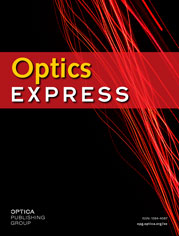Stability of period-one (P1) oscillations generated by semiconductor lasers subject to optical injection or optical feedback 

We study the stability of period-one (P1) oscillations experimentally generated by semiconductor lasers subject to optical injection (OI) and by those subject to optical feedback (OF). With unique advantages of broad frequency tuning range and large sideband rejection ratio, P1 oscillations can be useful in applications such as photonic microwave generation, radio-over-fiber communication, and laser Doppler velocimeter. The stability of the P1 oscillations is critical for these applications, which can be affected by spontaneous emission and fluctuations in both temperature and injection current. Although linewidths of P1 oscillations generated by various schemes have been reported, the mechanisms and roles which each of the OI and the OF play have however not been investigated in detail. To characterize the stability of the P1 oscillations generated by the OI and the OF schemes, we measure the linewidths and linewidth reduction ratios (LRRs) of the P1 oscillations. The OF scheme has a narrowest linewidth of 0.21 ± 0.03 MHz compared to 4.7 ± 0.6 MHz in the OI scheme. In the OF scheme, a much larger region of LRRs higher than 90% is also found. The superior stability of the OF scheme is benefited by the fact that the P1 oscillations in the OF scheme are originated from the undamped relaxation oscillation of a single laser and can be phase-locked to one of its external cavity modes, whereas those in the OI scheme come from two independent lasers which bear no phase relation. Moreover, excess P1 linewidth broadening in the OI scheme caused by fluctuation in injection parameters associated with frequency jitter and relative intensity noise (RIN) is also minimized in the OF scheme.
